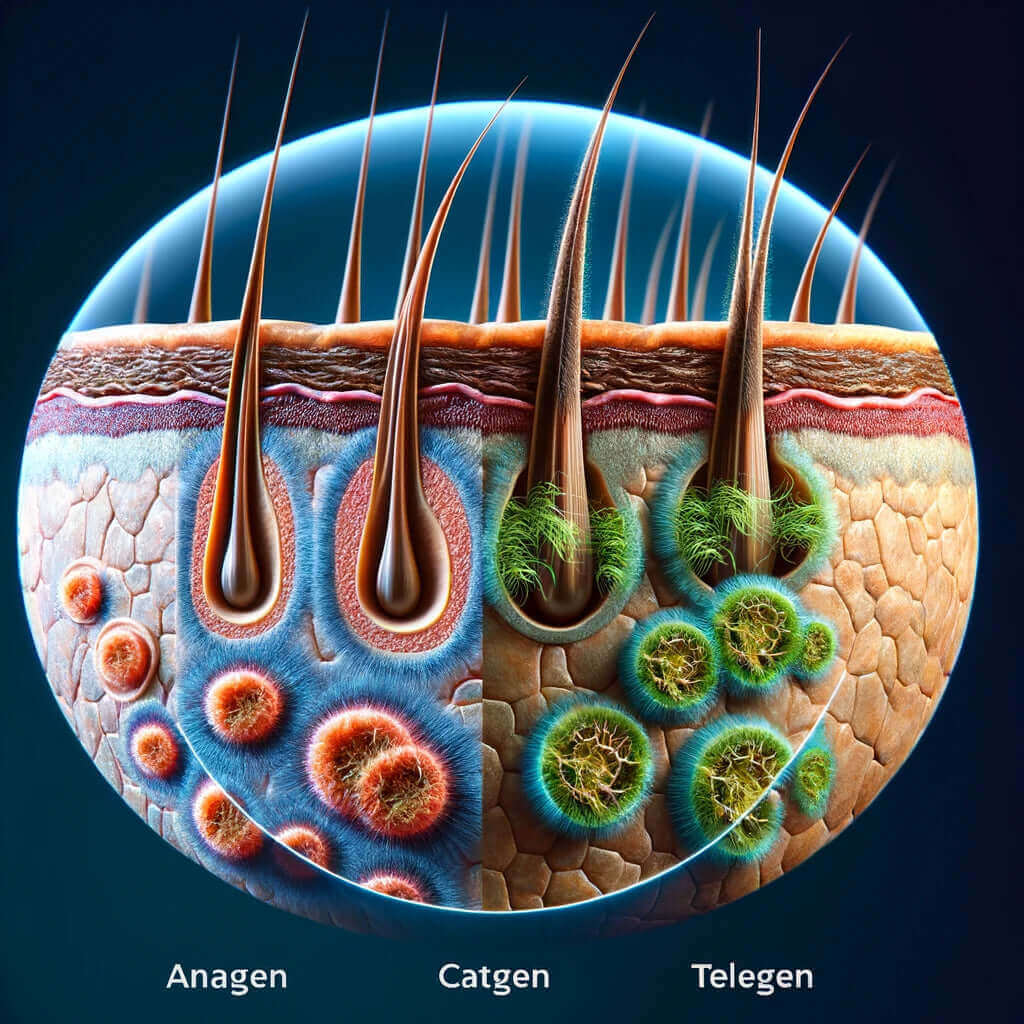Understanding Hair Growth: A Comprehensive Guide to the Factors Affecting Your Hair

Introduction to the topic of hair growth rates
The speed of hair growth cannot be generalized. Various factors such as hair type, gender, age and other influencing factors play a role. In this guide, we'll get to the bottom of the secrets of hair growth and highlight some fascinating facts and figures.
Average growth rates
On average, hair grows by around 0.3 to 0.5 mm every day, which corresponds to around 1 to 1.5 cm per month and 12 to 15 cm annually. However, these numbers vary depending on age, hormonal status and ethnic origin. For example, Asians' hair generally grows faster than Africans'.
Seasonal and daily fluctuations
Interestingly, hair grows faster in summer than in winter and slower at night than during the day. Men generally have thicker and slightly faster-growing hair than women. For more in-depth information about the individual phases of the hair growth cycle - anagen, catagen and telogen phases - see the hair cycle section.
Hair count: How many hairs do we have?
On average, people have around 100,000 hairs on their head. Blondes often have more, up to 150,000 (although finer hairs), people with dark hair around 100,000 and redheads around 80,000 hairs. The number of hairs is genetically determined.
The thickness of the hair
Central European hair has an average thickness of 0.06 mm. Asian hair is typically between 0.06 – 0.08 mm thick, while African hair is the finest at 0.04 to 0.5 mm.
What is hair made of?
A hair consists of the hair shaft and the hair root. The hair root is located in the dermis and is surrounded by a hair follicle. The shape of this follicle determines whether the hair is straight or curly: round follicles result in straight hair, oval ones result in curls.
The hair shaft contains the pigment that determines our innate hair color. Hair is made of keratin, melanin, sulfur, water and lipids – they are essentially horny filaments. If the hair contains too little keratin or is too dry, it often appears dull and brittle.
Hair Loss: Normality vs. Excessive Loss
Normally a hair falls out after two to six years, with daily loss of 50 to 100 hairs considered normal. However, more than 100 hairs falling out per day is considered hair loss.
Common types of hair loss are hereditary androgenetic alopecia and diffuse hair loss, which depends on the living conditions of those affected. Incidentally, the thickness and length of the hair do not play a role in the development of hair loss; it begins in the hair follicles of the scalp.
Conclusion
Understanding the complexities of hair growth can help us better care for our hair and recognize when hair loss might be a concern. For more in-depth information and tips on promoting healthy hair growth, stay tuned to our blog.









